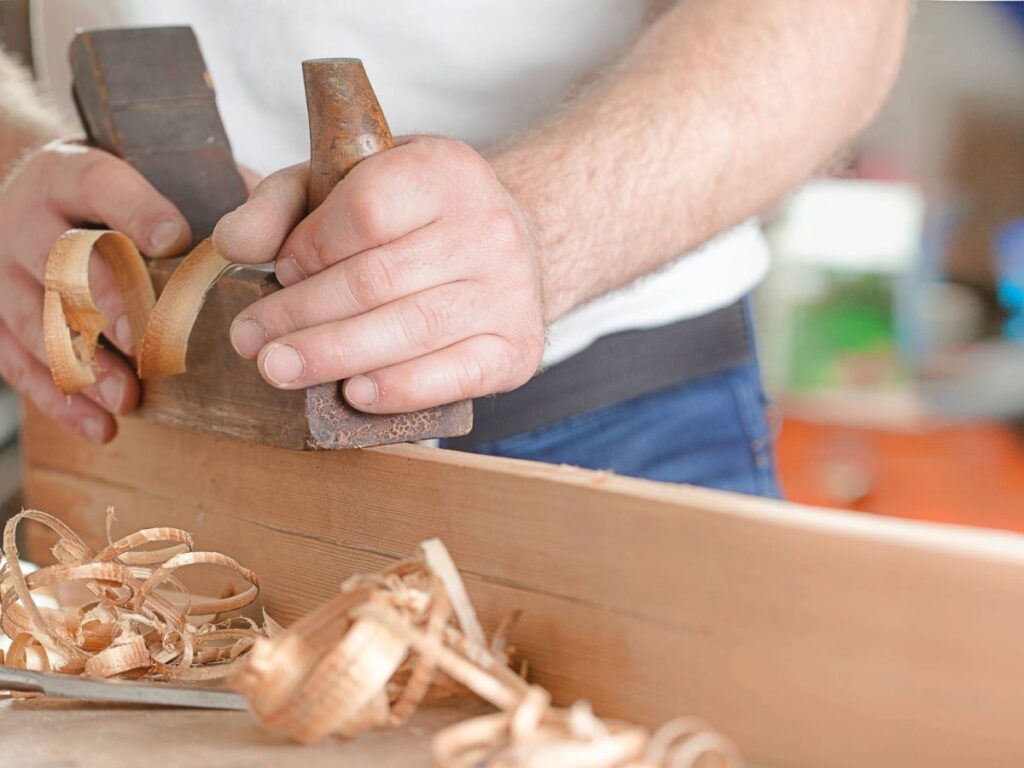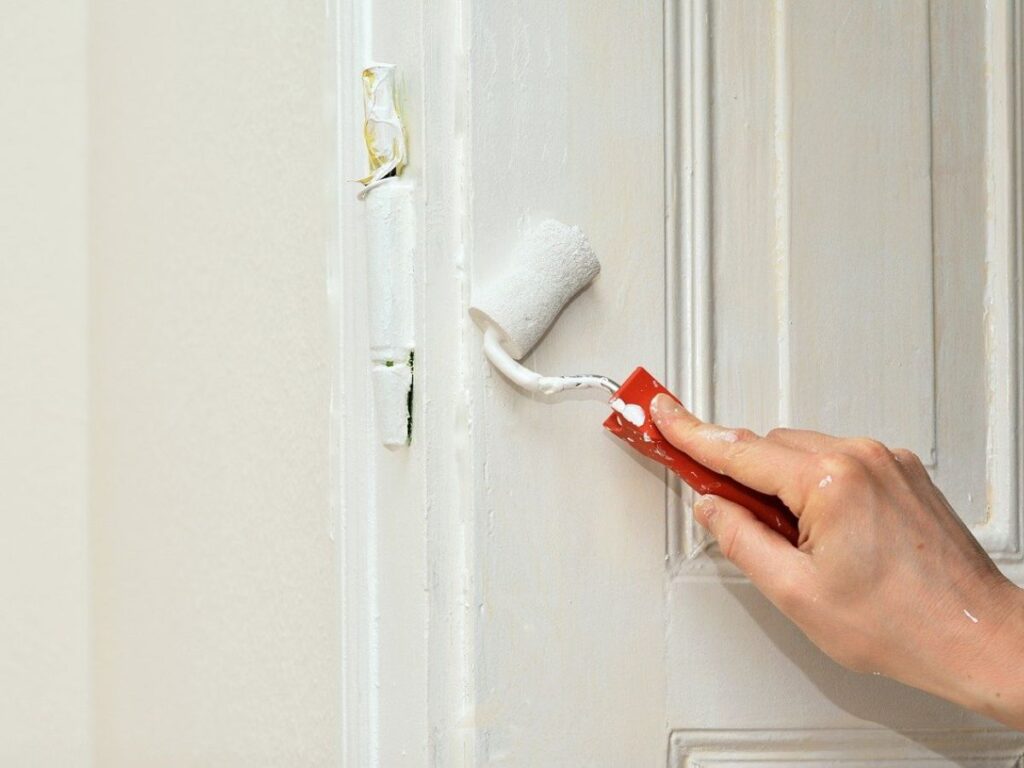I once visited a greenhouse project where the team was replacing every exterior door. Watching them fit each frame made me realize how much the manufacturing process matters before the door even reaches the site.
That thought connects directly to how you choose your suppliers.
I’ve worked with builders and engineers across Southeast Asia and Europe, helping them source doors that match their project needs. That experience gives us insight into what works best for business buyers.
In this review, we’ll explain how doors are manufactured, step by step. You’ll see the process clearly, and your questions will be answered by the time you finish.
It’s knowledge that helps you make better decisions.
So let’s begin!
Quick Overview Chart
It’s easy to lose track of the big picture when you’re deep into details. This table sums up the entire process from start to finish, so you can see every stage at a glance. Use it as a reference when planning your next project or discussing requirements with your supplier.
| Step | Process Stage | Key Actions | Purpose |
| 1 | Design & Planning | Define usage, set measurements, meet safety codes, create technical drawings, plan budget and logistics | Establish a clear blueprint for production |
| 2 | Material Selection & Preparation | Choose material type, inspect quality, check specs, prepare and treat materials | Match materials to performance and design needs |
| 3 | Cutting & Shaping Components | Precision cutting, CNC operations, profiling, drilling joinery, smoothing edges | Produce accurate, ready-to-assemble parts |
| 4 | Core Assembly & Joinery | Build frame, add core, secure panels, reinforce stress points, join components | Create a strong, stable door structure |
| 5 | Surface Finishing | Sanding, filling, cleaning, priming, painting or staining, sealing, curing | Protect and enhance the door’s appearance |
| 6 | Hardware Machining & Installation | Drill and cut for hinges, locks, and handles, align hardware, test movement | Prepare door for smooth operation on site |
| 7 | Quality Inspection & Testing | Visual checks, measurement verification, functional tests, compliance review | Confirm quality and performance before shipment |
| 8 | Packaging & Delivery | Protect surfaces and corners, label, plan transport, load carefully, track delivery | Deliver doors safely and on schedule |
If you want to dive deeper into how each stage works and why it matters, read the full breakdown below. It will give you the details to make informed choices for your next order.
Step#1 Design & Planning
Before any material is cut, everything begins with a clear plan. In many large-scale projects, this stage is where the final outcome is truly shaped. Years of seeing successful and failed installations show that a strong plan prevents costly mistakes later.
Understanding Project Requirements
- Identify Usage Needs: Will the door be for an exterior entrance, an interior space, or a high-traffic area? Each user has different demands for strength, insulation, and appearance. Matching the design with the purpose avoids performance issues in the future.
- Set Dimensional Standards: Accurate measurements from the site team are key. Even a small error can lead to delays and rework during installation.
- Account for Safety Regulations: Depending on the location, fire ratings, accessibility, or security standards may apply. Addressing these requirements at the start keeps the project compliant.
- Define Style and Finish Goals: From modern to classic, setting the visual direction early keeps all teams aligned. This decision also influences the next stage: material selection.
Creating Detailed Technical Drawings
- Draft Initial Concepts: Early sketches and layouts give stakeholders a visual reference to discuss proportions and style.
- Add Construction Details: Frame dimensions, panel layouts, and any glazing placement are specified. This provides manufacturing teams with a precise blueprint.
- Incorporate Hardware Specifications: Hinge types, lock placements, and handle designs are set out in advance. Early planning here prevents last-minute adjustments.
- Review and Approve: Feedback is collected, changes are made, and the design is finalized. The approved drawing then becomes the guide for production.
Planning for Efficiency and Budget
- Select Cost-Effective Options: Balancing durability and budget is important, especially for large orders. A strong result doesn’t require overspending.
- Plan for Production Lead Time: Knowing the required delivery date allows production schedules to be set without risking delays.
- Optimize Material Use: Efficient use of materials lowers waste and supports sustainability goals.
- Factor in Transport Logistics: Considering size, weight, and packaging needs in advance helps deliveries arrive safely and on time.
Step#2 Material Selection & Preparation
I’ve seen projects succeed or fail based on the materials chosen at this stage. The right selection sets the foundation for durability, performance, and appearance. This is where your priorities for cost, function, and design come together.
Choosing the Right Material Type
The type of material affects strength, appearance, cost, and lifespan. Here’s a quick guide to common options:
| Material Type | Key Features | Common Uses | Benefits | Limitations |
| Solid Wood | Natural grain, heavy weight, premium feel | Luxury villas, heritage hotels, executive offices | Strong, beautiful, long-lasting | Higher cost, needs maintenance |
| Engineered Wood | Layers of wood and adhesives | Residential and commercial projects in varied climates | Stable, less warping, cost-effective | Less natural grain than solid wood |
| Steel | High strength, security-focused | Industrial doors, security entrances | Very strong, durable, secure | Heavy, may rust without treatment |
| Aluminum | Lightweight metal | Modern hotels, greenhouse doors, interior partitions | Rust-resistant, sleek look | Lower impact resistance than steel |
| Fiberglass | Molded composite, wood-grain or smooth finish | Exterior doors in humid or coastal areas | Weather-resistant, low maintenance | Limited design flexibility |
| PVC / Vinyl | Synthetic polymer | Budget-friendly residential projects | Moisture-proof, affordable | Less premium look, lower lifespan |
| Glass | Clear, frosted, or textured panels | Entrances, interior dividers, greenhouse applications | Modern look, natural light | Requires safety glass for durability |
| Composite Materials | Blend of wood fibers, plastics, and resins | Exterior and high-traffic areas | Strong, stable, weather-resistant | Can be heavier than other materials |
Assessing Quality and Specifications
- Inspect Material Grades: High-grade lumber or metal means fewer defects and better performance over time. This is worth the investment for long-term results.
- Match to Project Requirements: Materials should meet fire resistance, sound insulation, or energy efficiency needs based on your building’s purpose.
- Check Supplier Certifications: Verifying that suppliers meet industry standards adds another layer of quality control.
- Evaluate Consistency: For large orders, material consistency ensures every door looks and performs the same.
Preparing Materials for Production
- Moisture Conditioning for Wood: Wood should be dried to the correct moisture content to prevent warping later.
- Cutting Stock to Size: Initial cuts prepare the raw materials for shaping in the next stage. This step saves time on the production line.
- Surface Treatment: Applying primers or sealants early can protect materials during the build process.
- Organizing for Workflow: Grouping and labeling parts keeps production efficient and reduces errors.
Step#3 Cutting & Shaping Components
This is the point where raw materials begin to look like door parts. In my experience, accuracy here makes the difference between smooth installation and frustrating adjustments on-site. Every cut and shape needs to match the plan from Step #1.
Precision Cutting of Materials
- Use of Industrial Saws: Large table saws or beam saws handle big sheets and planks with consistent cuts. This speeds up production and keeps parts uniform.
- CNC Machine Operations: Computer-controlled cutting allows for exact dimensions, curves, and complex patterns. This is especially useful for custom designs or large orders.
- Maintaining Tight Tolerances: Even small variations can cause problems later. Skilled operators check dimensions at regular intervals. Vallisco uses the same approach to keep every piece consistent before moving to assembly.
- Segregating Cut Parts: Once cut, each piece is labeled and stored to keep production organized. This reduces the risk of mixing components from different orders.
Shaping and Profiling Components
- Edge Profiling: Special router bits-shaped edges to match the design, whether square, rounded, or decorative. This adds both function and style.
- Panel Grooving: For panel doors, grooves are cut into stiles and rails so panels can fit securely. This step needs to be precise for a tight fit.
- Drilling for Joinery: Holes or slots for dowels, mortise-and-tenon joints, or other connectors are made here. Accurate placement means stronger assembly later.
- Smoothing Rough Cuts: Quick sanding or planing removes sharp edges and splinters, preparing parts for final assembly.

Step#4 Core Assembly & Joinery
This is where separate components become a single structure. A strong and accurate assembly here is what gives the door its strength and stability for years to come. If this stage is rushed or done poorly, problems will show quickly once the door is in use.
Building the Core Structure
- Assembling the Frame: Stiles and rails are joined to create the basic rectangle of the door. The frame must be square, so the door will hang and close correctly.
- Adding the Core Material: Depending on the design, the core can be solid, hollow, or filled with materials like honeycomb cardboard, mineral board, or foam for insulation and sound control.
- Securing the Panels: In panel doors, the panels are fitted into grooves in the frame. They’re held firmly but given slight room to expand or contract with temperature and humidity.
- Reinforcing Stress Points: Areas near hinges and locks may get extra blocking or bracing to handle the weight and movement over time.
Joining and Strengthening Components
- Using Proven Joinery Methods: Mortise-and-tenon, dowels, or biscuits are common for connecting stiles and rails. These methods create strong, lasting joints.
- Applying Adhesives: Industrial-grade wood glue or resin-based adhesives add strength to mechanical joints. This reduces the chance of movement or separation.
- Clamping for Alignment: Components are clamped during curing so everything stays aligned. Even a small shift can cause fit problems later.
- Quality Checks During Assembly: At this stage, measurements are confirmed again. The assembly teams do the same to maintain accuracy before the door moves to finishing.
Step#5 Surface Finishing
This is where the door starts to take on its final look and protection. From what I’ve seen, a good finish does more than make a door attractive, it shields it from damage and extends its life. If this step is skipped or done poorly, even the best-built door will wear out too soon.
Preparing the Surface
- Sanding for Smoothness: The entire surface is sanded to remove any rough spots or machining marks. A smooth surface allows paint or stain to go on evenly.
- Filling Imperfections: Any small dents, holes, or gaps are filled with suitable filler. This step gives the surface a uniform appearance before finishing.
- Cleaning the Surface: Dust and debris are removed, often with air blowers or tack cloths. A clean surface helps the finish bond properly.
Applying the Chosen Finish
- Priming: A primer layer is applied to improve adhesion and block stains. This is especially important for painted doors.
- Staining or Painting: Stain brings out the wood’s natural color, while paint offers a solid color option. The choice depends on your design goals.
- Sealing for Protection: Clear sealers, varnishes, or polyurethane add a protective layer against moisture, scratches, and UV damage.
- Multiple Coats as Needed: Several layers may be applied, with light sanding between coats to achieve a smooth, durable surface.
Final Touches Before Next Stage
- Detail Work: Edges, grooves, and profiles are checked for full coverage so no raw spots remain.
- Curing Time: The finish is allowed to dry and harden completely before handling. This prevents smudges or damage during the next process.
- Inspection for Quality: Vallisco teams often inspect each door at this point to confirm the finish meets both visual and performance standards before moving on to hardware installation.

Step#7 Quality Inspection & Testing
This is the stage where every door is checked before it leaves the factory floor. Trust me, catching an issue here is far better than finding it after delivery. A thorough inspection protects your reputation and keeps projects running smoothly.
Visual and Dimensional Checks
- Surface Condition: Inspect for scratches, dents, or finish flaws. Even small defects can be visible once the door is installed.
- Color and Finish Consistency: Make sure all doors in the same order have the same shade and texture, so the final project looks uniform.
- Measurement Verification: Length, width, thickness, and squareness are confirmed against the technical drawings. Precision here ensures easier installation.
Functional and Structural Testing
- Opening and Closing Fit: Doors are tested in a frame to check smooth movement without sticking or gaps.
- Hardware Operation: Hinges, locks, and handles are checked for proper function and alignment. This step helps avoid site adjustments.
- Strength and Stability Tests: In some cases, impact or pressure tests are done to verify the door can handle its intended use. Manufacturers apply similar checks to confirm durability before packing.
Compliance and Final Approval
- Meeting Standards: Doors must match any fire rating, acoustic, or safety requirements specified in the order.
- Customer Specifications: Each project may have its own checklist, and the door is compared to it item by item.
- Approval for Shipment: Only after passing all inspections is the door cleared for packing and delivery. This final sign-off is the safeguard before it reaches your site.
Step#8 Packaging & Delivery
Even the best-made door can arrive damaged if this step is handled poorly. I’ve seen great work spoiled because of weak packaging or careless transport. A well-organized delivery process keeps your order safe and on schedule.
Secure and Protective Packaging
- Using Protective Layers: Foam, cardboard, or plastic wrap is applied to cover surfaces and edges. This prevents scratches or dents during handling.
- Corner Protection: Reinforced guards protect vulnerable edges from impact. Corners take the most hits in transport.
- Moisture Barriers: For shipping through humid or wet climates, a moisture-resistant wrap helps keep finishes intact.
- Labeling for Identification: Each door is clearly labeled with project details, size, and order number to avoid mix-ups.
- Stacking and Securing: Doors are stacked with spacers and tied down to prevent shifting inside the transport container.
Coordinated And Timely Delivery
- Planning Transport Routes: Delivery schedules are planned to match your site readiness, avoiding storage issues.
- Choosing the Right Vehicle: Depending on size and quantity, trucks or containers are selected to keep the load stable.
- Loading with Care: Doors are lifted and placed using the right equipment to prevent bending or damage.
- Tracking Shipments: Real-time updates help you know where your order is and when it will arrive. It’s essential to work with logistics teams that specialize in handling building materials safely.
- On-Site Handover: The delivery team coordinates with site staff for unloading and inspection before sign-off.
Conclusion
Remember the greenhouse installation from the opening? The smooth fit and finish came from a process that started long before the doors reached the site.
Every stage, from design and materials to testing and delivery, was handled with care and precision.
That’s what this article has laid out for you: a clear path from raw material to ready-to-install door.
If your project needs doors built for performance and appearance, partner with a team that does it right. Vallisco can help you achieve that.
Contact us today to start planning doors that match your vision and stand the test of time.
Explore Related Resources
Want to see more? We’ve gathered additional product choices to give you even more variety:
Still haven’t found what you’re looking for? Don’t hesitate to contact us. We’re available around the clock to assist you.







